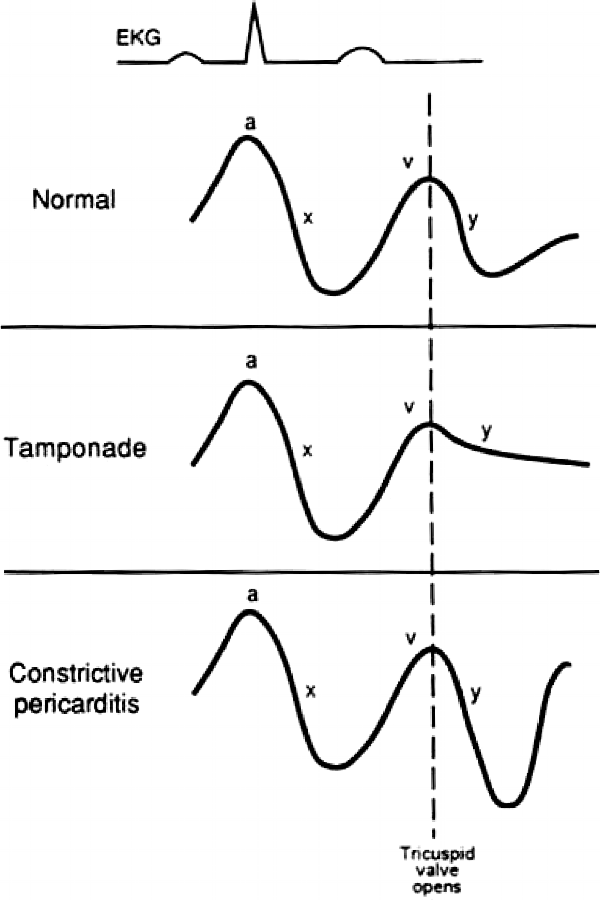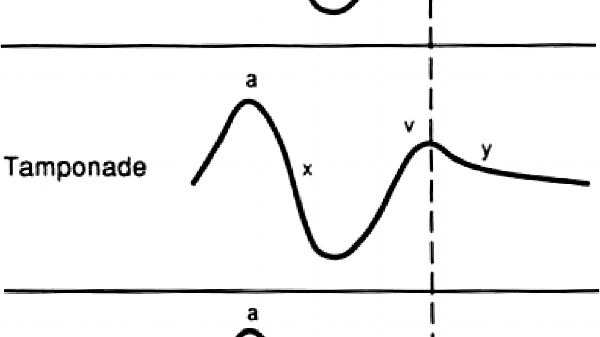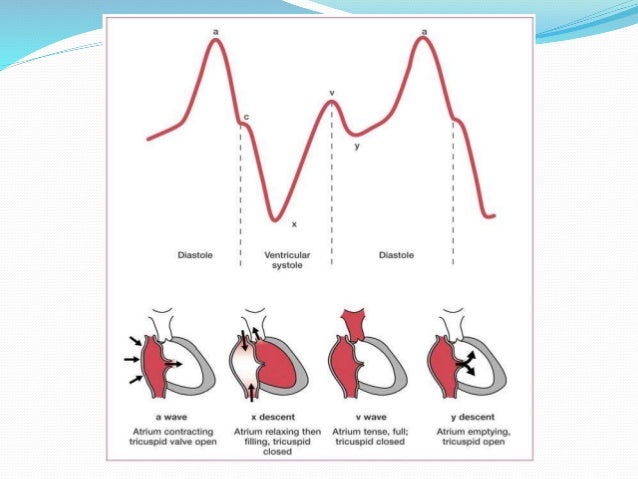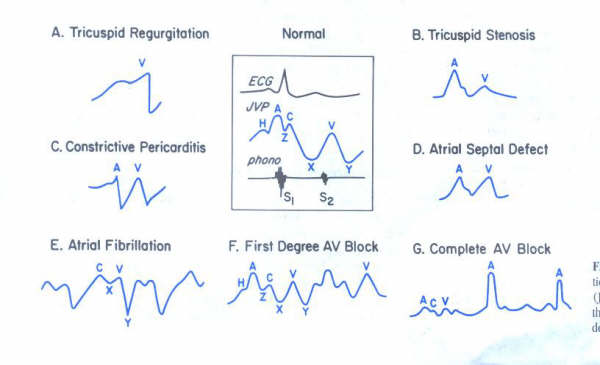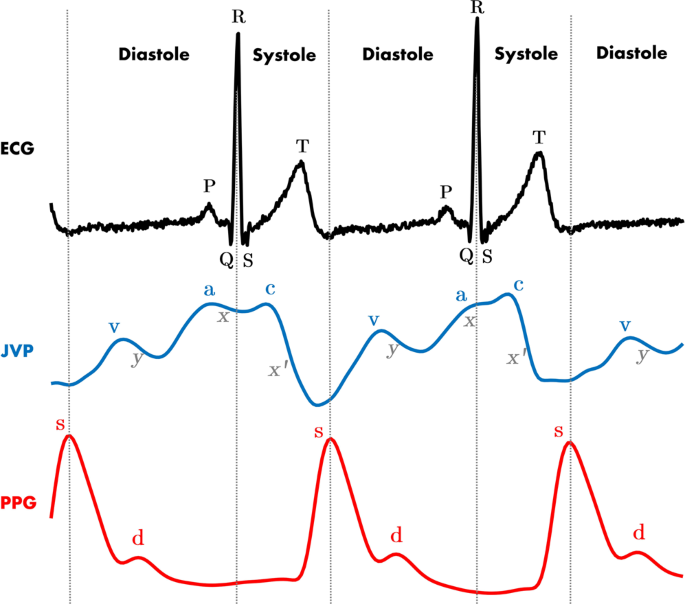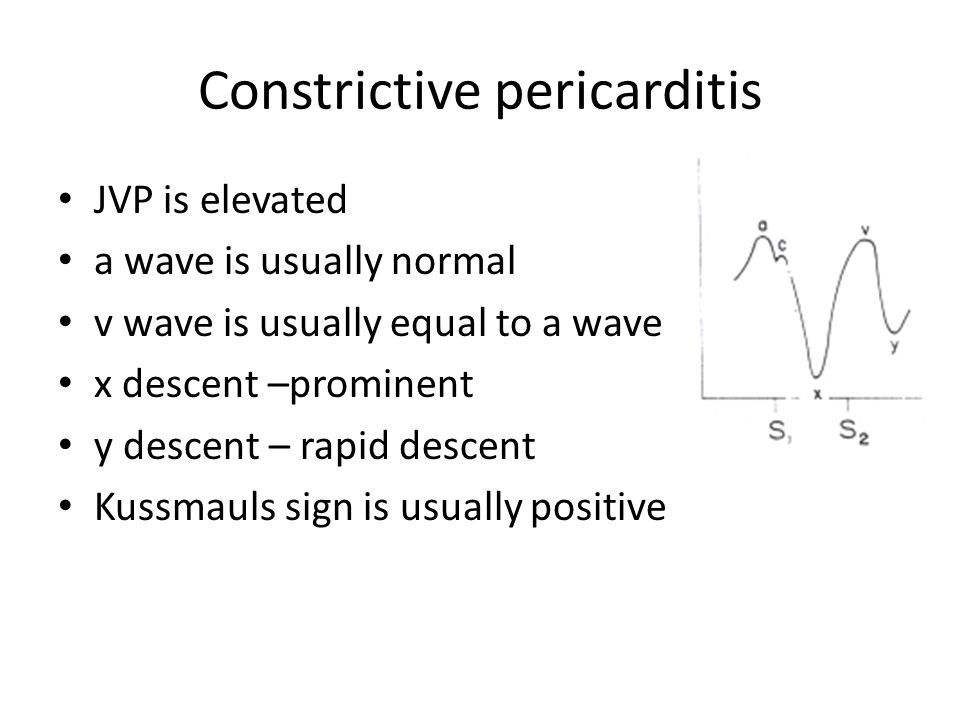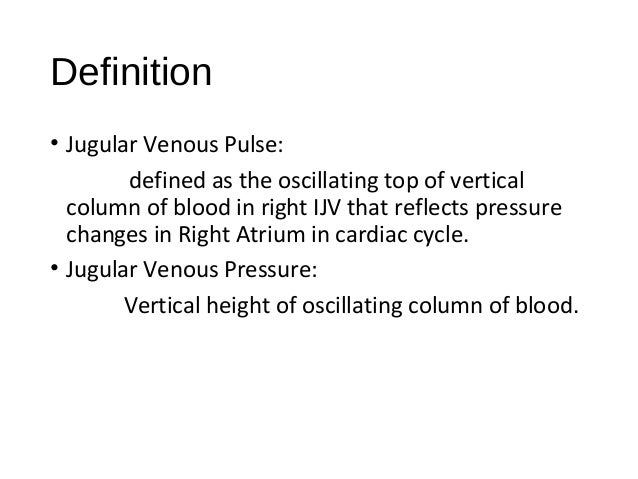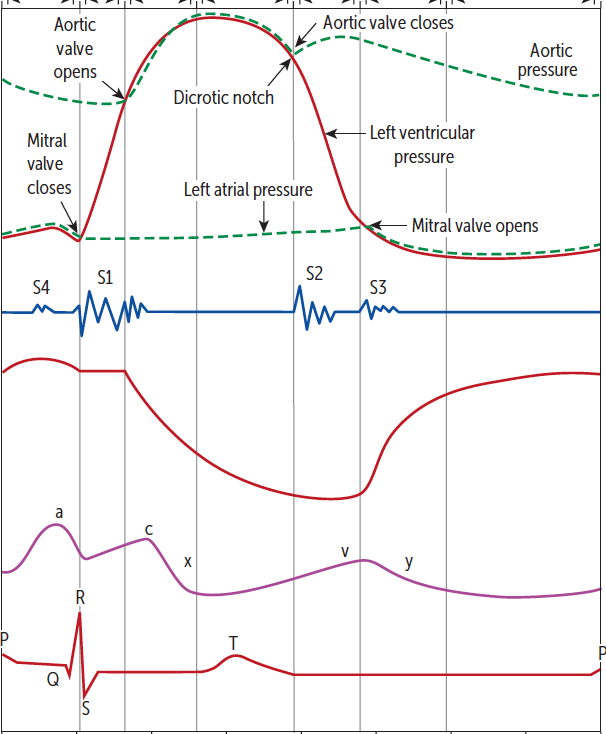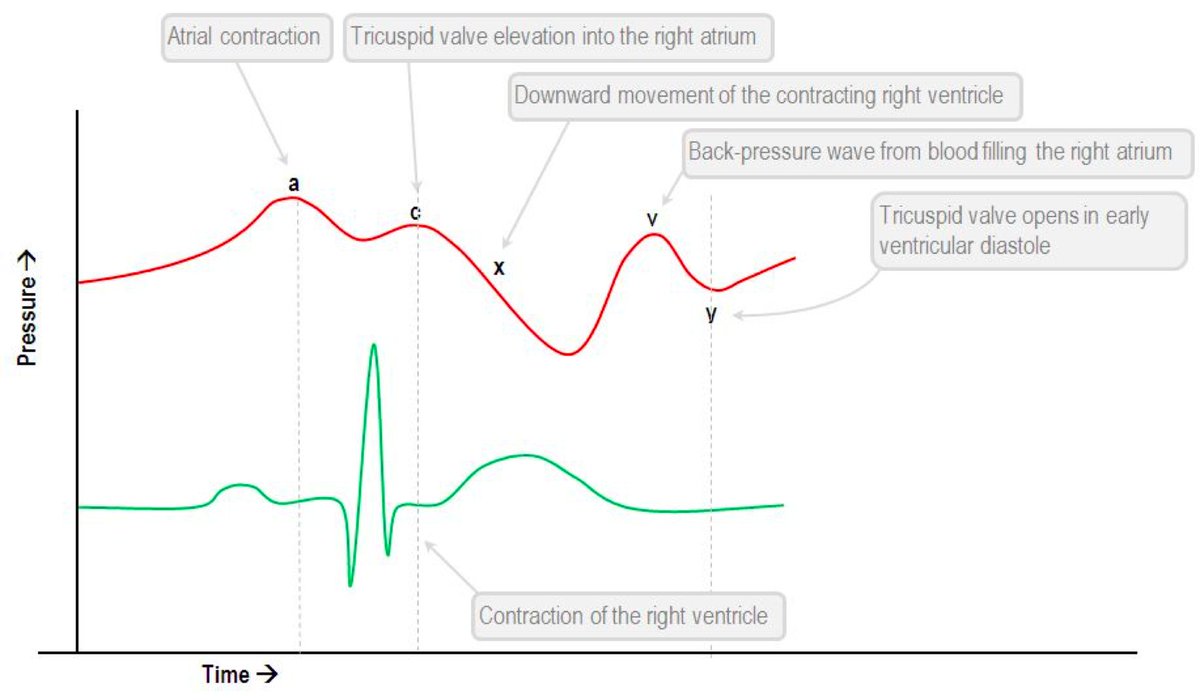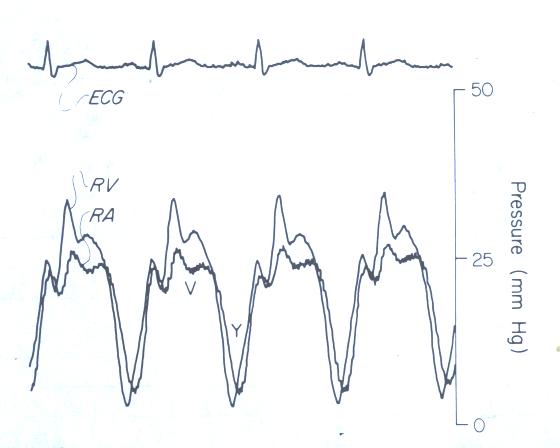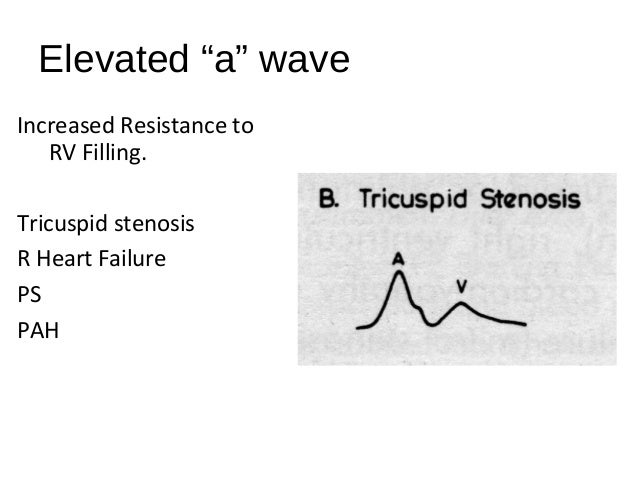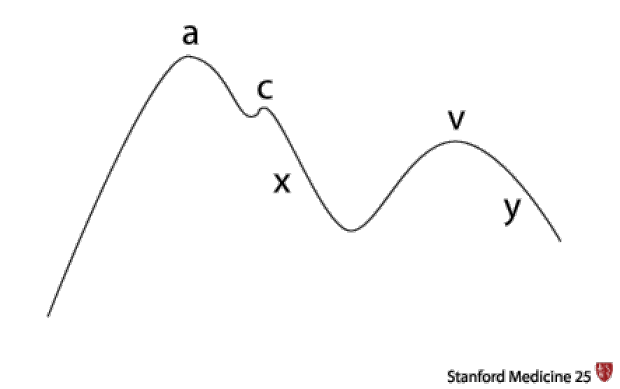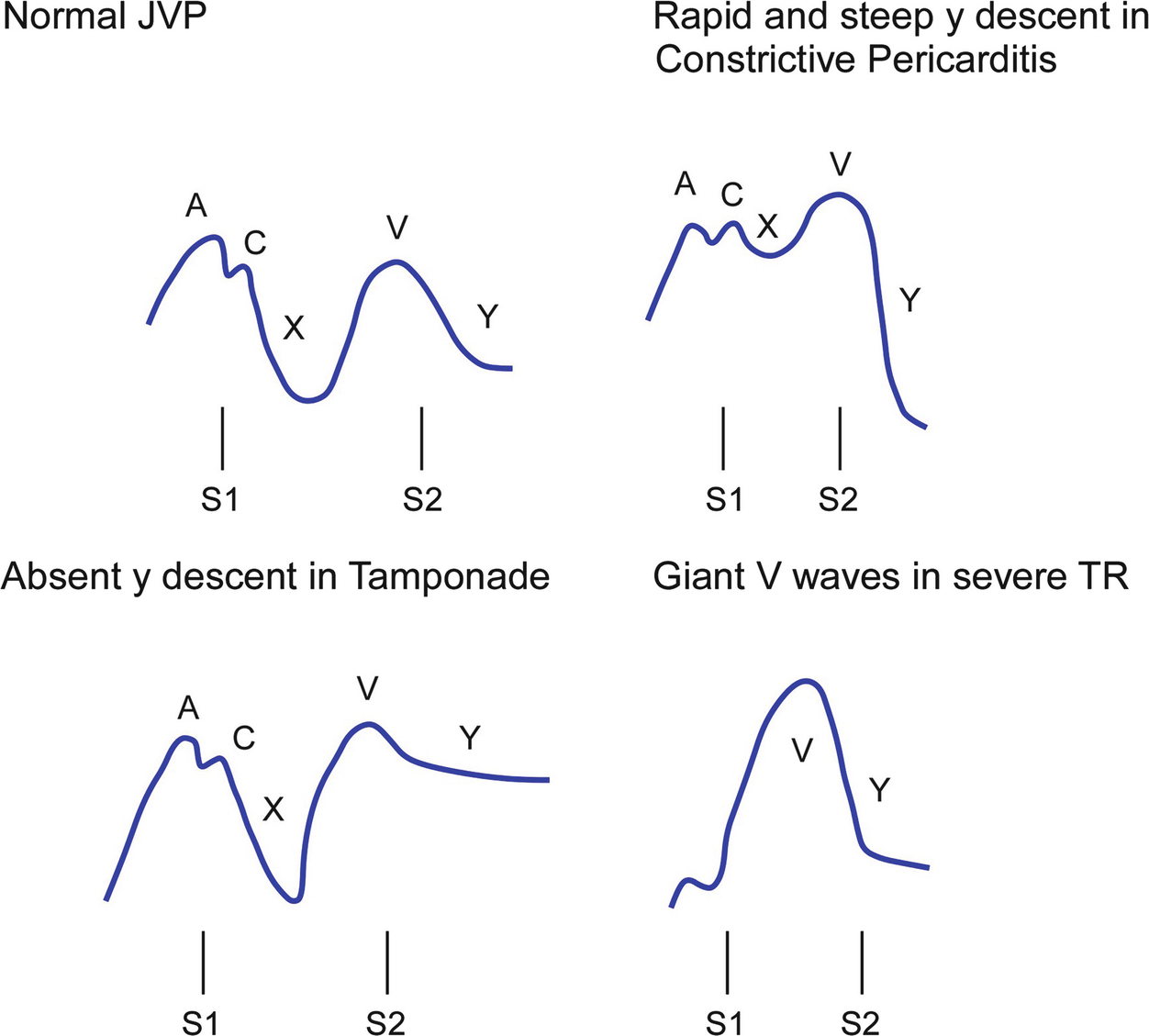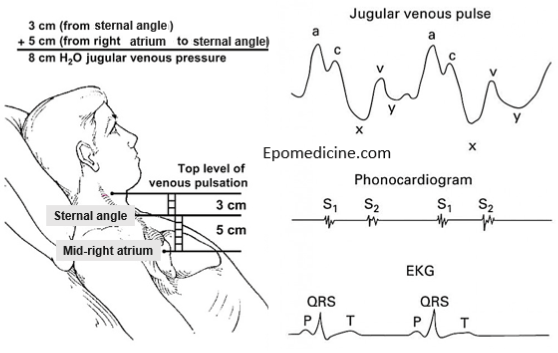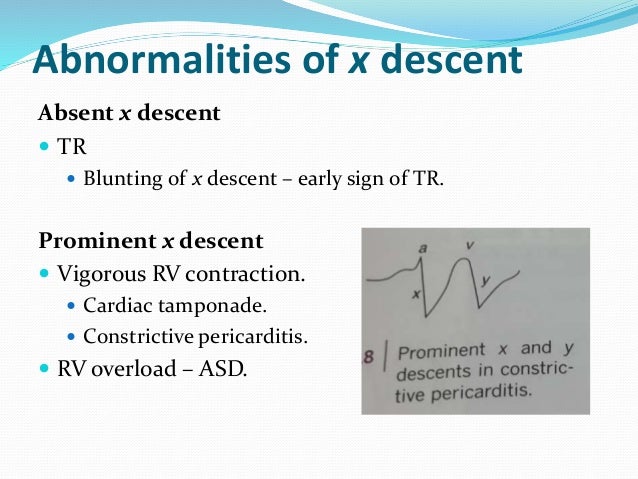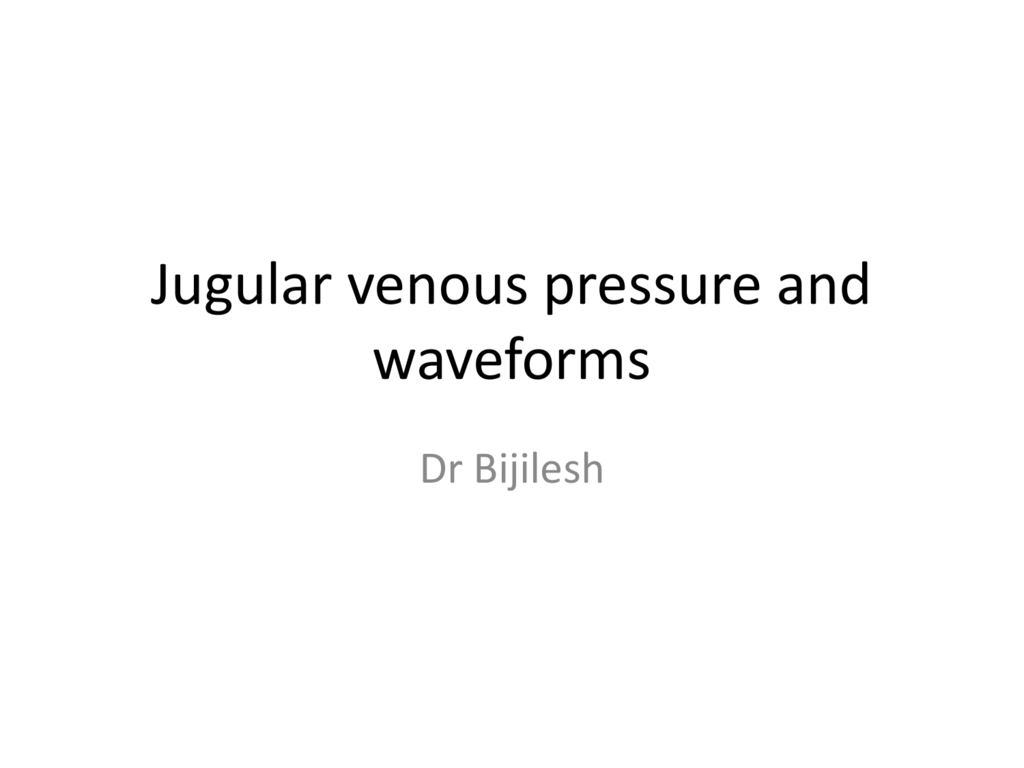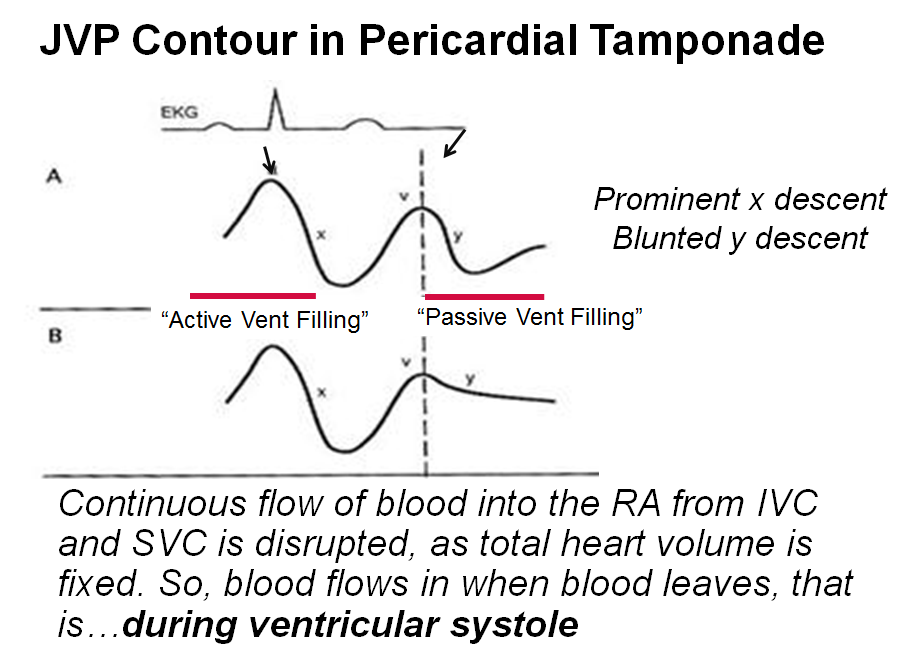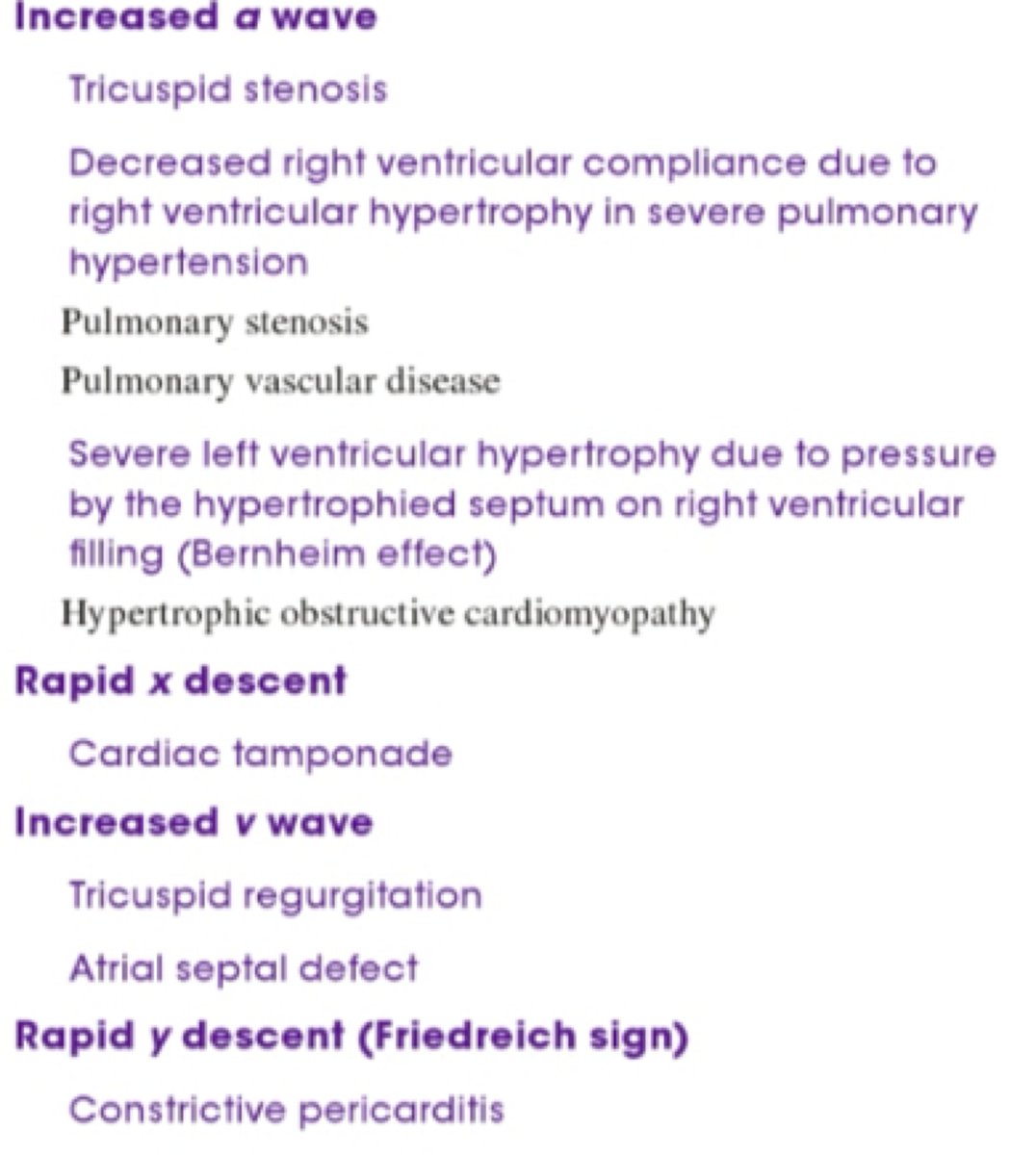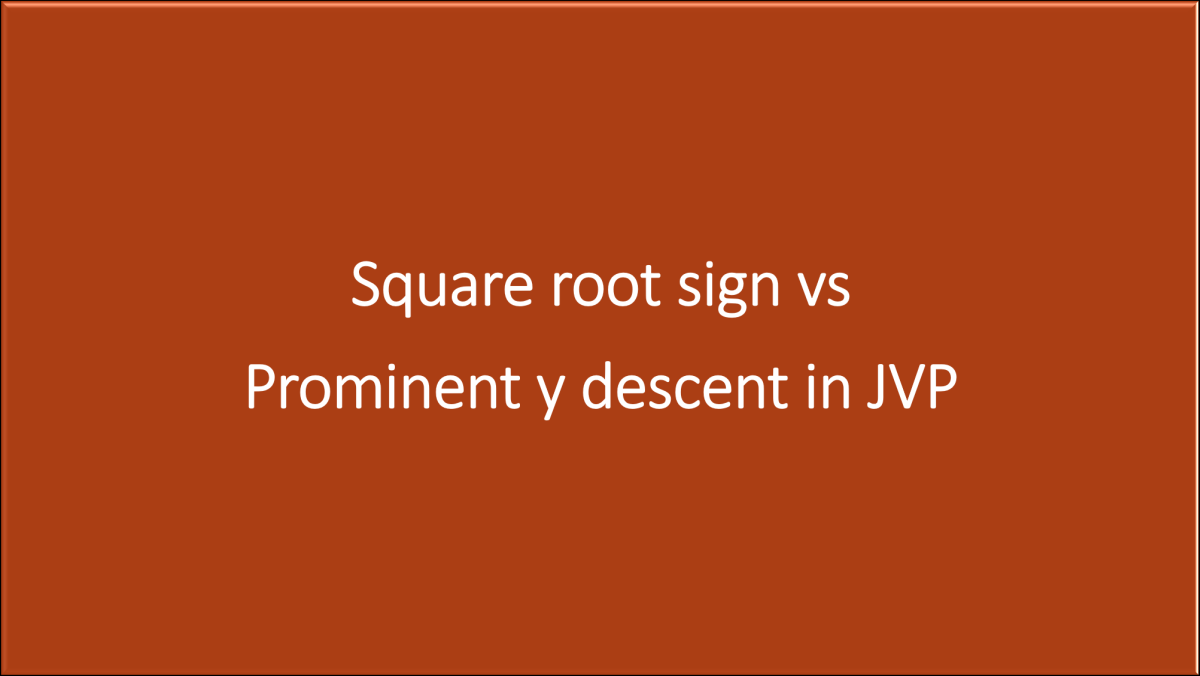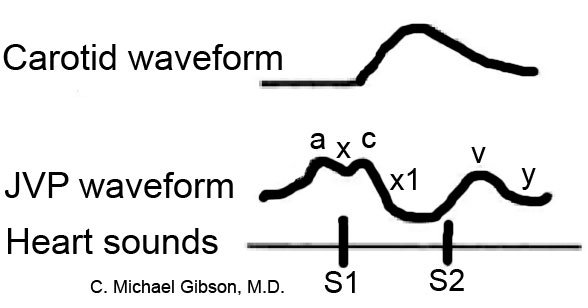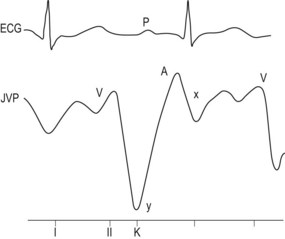Y Descent Jvp

Click here for the correct answer.
Y descent jvp. The y descent occurs when the tricuspid valve opens resulting in blood from the right atrium filling the right ventricle and blood from the svc and ijv filling the right atrium. In both constrictive pericarditis and severe right sided heart failure the venous pressure is elevated with a sharp y dip in the jpd. View chapter purchase book. This is known as kussmaul s sign with deep x and y descents.
A classical method for quantifying the jvp was described by borst molhuysen in 1952. Y descent in jugular venous pulse occurs with. Y descent in jvp mcq. The jugular venous exam is used to measure jugular venous pressure jvp and normal abnormal waveforms in the neck and is an important aspect of assessing a patient s volume status especially in patients with heart failure liver failure and kidney failure.
Normally the jvp should rise on expiration and fall on inspiration. When the jvp rises on inspiration it indicates. Conditions associated with an elevated jvp include congestive heart failure and fluid overload. A prominent y descent has been found to occur in about one third of the patients with constrictive pericarditis and two thirds of patients with right ventricular infarction.
Tamponades produce sharp x descent only whilst constrictive pericarditis produces sharp x and y descent. It has since been modified in various ways. C descent of the floor of the right atrium in ventricular systole. A slow y descent in the jvp suggests an obstruction to right ventricular filling and may be the only abnormal finding in patients with tricuspid stenosis or right atrial myxoma figure203 b.
A venous arch may be used to measure the jvp more accurately. 5 the jugular x and y descents are prominent in cp due to exaggerated longitudinal annular motion and prominent early ventricular filling respectively. B decline in right atrial pressure when the pulmonary valve opens. As blood is drawn into the column whilst the tricuspid valve is closed the level of the jvp is temporality increased.
The main method of differentiating tamponade from constrictive pericarditis on jvp is by observing the x and y descent. A decline of right atrial pressure when the tricuspid valve opens. Pericardial constraint results in the inability of the right heart to accommodate inspiratory abdominal venous return translating to an inspiratory increase in the jvp kussmaul s sign. Normally only the a and v waves are visible.
The presence of a rapid y descent excludes the diagnosis of pericardial tamponade. The y descent corresponds to the rapid emptying of the atrium into the ventricle following the opening of the tricuspid valve.
